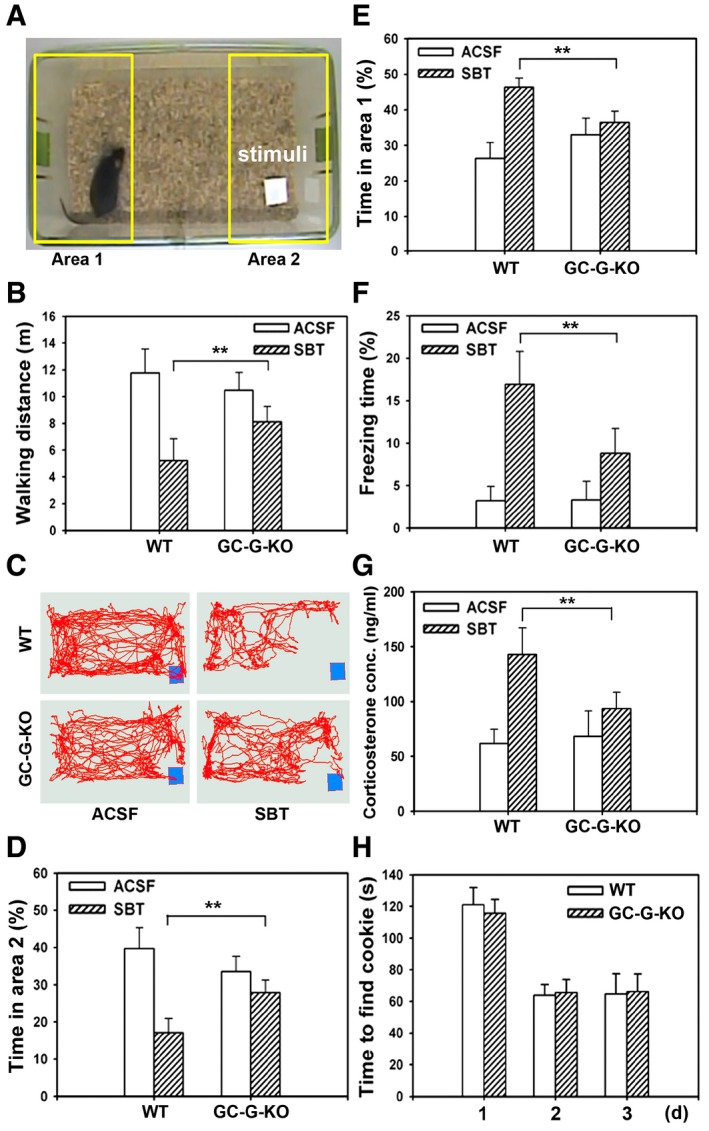-
A
Example of a video frame demonstrating the behavioral assay in which a male mouse (only male mice were used) was exposed to a piece of blotting paper impregnated with SBT (stimulus) or ACSF buffer (control). Behavioral experiments involving adult WT and GC‐G KO mice (8 weeks old) were exposed successively for 5 min to SBT.
-
B
In the presence of SBT, the walking distance [measured in meters (m)] was significantly higher in GC‐G‐KO than in WT mice.
-
C
Traces reflecting all positions along the trajectory that a representative WT or GC‐G‐KO mouse traveled in the testing chamber during a 5‐min session in the presence of SBT or ACSF (control). The position of the blotting paper soaked with either SBT or ACSF is indicated by the blue rectangle.
-
D, E
Percentage of time spent by WT and GC‐G‐KO mice in each of the two opposite cage areas [area 1 (E) and area 2 (D) are circumscribed by the yellow rectangles in (A)] in the presence of SBT or ACSF.
-
F
In the presence of SBT, the percentage of freezing time was decreased in GC‐G‐KO mice as compared to WT animals.
-
G
SBT‐evoked elevation of the plasma concentration of the stress hormone corticosterone was impaired in GC‐G‐KO mice as compared to WT conspecifics.
-
H
The time [measured in seconds (s)] required to find a hidden cookie was not affected in GC‐G‐KO mice. For each genotype, six animals were tested. Experiments were conducted on three subsequent days (d).
< 0.01. For each genotype, six animals were tested.

